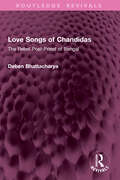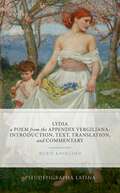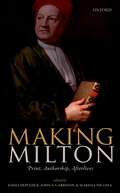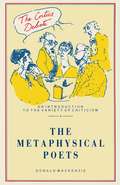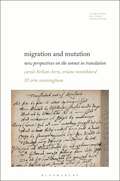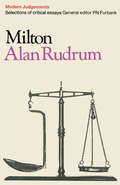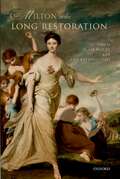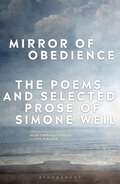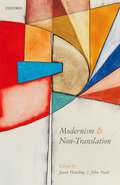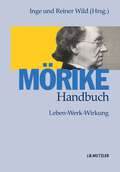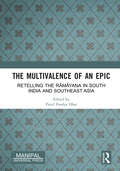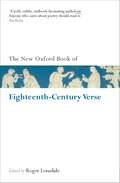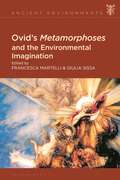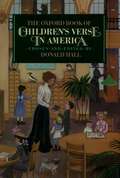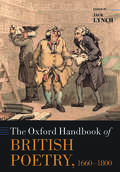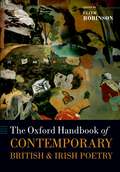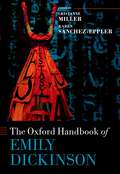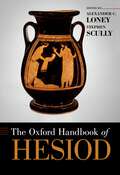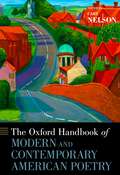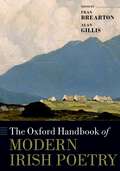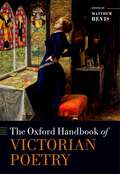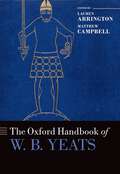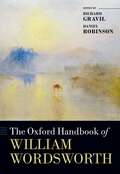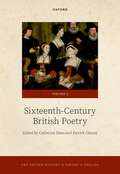- Table View
- List View
Love Songs of Chandidas: The Rebel Poet-Priest of Bengal (Routledge Revivals)
First published in 1967, Love Songs of Chandidās provides an informative introduction which makes vividly clear the importance of Chandidās to the Indian peasant masses. As the author tells us, the traveller through the Birbhum area of Bengal hears Chandidās everywhere, in the villages, in the fields, on the roads. Night after night, the people gather in the temple courtyards or on the village greens to listen to professional ‘Kirtan’ singers sing his songs of the divine love of Radha and Krishna. The influence of Chandidās on contemporary Bengali literature is equally important, his songs having enriched the work of great poets such as Rabindranath Tagore, Govindadas, and many others. The author also discusses the interesting topic of the Sahaja (‘spontaneity’) movement in Indian faith and literature, as manifested in the songs of Chandidās, and the worship of love-making, divine and human, as an important aspect of this faith. This book will be of interest to students of literature, music, history, cultural studies and South Asian studies.
Lydia, a Poem from the Appendix Vergiliana: Introduction, Text, Translation, and Commentary (Pseudepigrapha Latina)
This volume offers the first comprehensive literary and philological commentary on the Lydia, in any language. At its core is a freshly edited Latin text of the poem, which systematically reconsiders the paradosis as well as earlier textual scholarship and endorses numerous improvements against current editions. Besides scrutinizing all the textual problems and adopted solutions, the commentary provides a thorough linguistic exegesis of the text as well as a wide-ranging discussion of the poem's rich intertextuality, both Latin and Greek. The Lydia's literary side is also the main focus in the introduction, which challenges the established communis opinio that views the Lydia as a dateless anonymous imitation of Virgilian bucolic, by situating it in the literary context of the Late Republic: it highlights, for the first time, the centrality of Greek bucolic, in particular of Bion's Lament for Adonis and the anonymous Lament for Bion, in the Lydia's literary genealogy and tentatively revives the old attribution to Valerius Cato, as well as exploring the poem's relationship with its better-known sibling, the Dirae. The work is complete with an English translation, aimed to serve as a guide to the Latin text for readers without a solid background in the ancient language.
Making Milton: Print, Authorship, Afterlives
This volume consists of fourteen original essays that showcase the latest thinking about John Milton's emergence as a popular and canonical author. Contributors consider how Milton positioned himself in relation to the book trade, contemporaneous thinkers, and intellectual movements, as well as how his works have been positioned since their first publication. The individual chapters assess Milton's reception by exploring how his authorial persona was shaped by the modes of writing in which he chose to express himself, the material forms in which his works circulated, and the ways in which his texts were re-appropriated by later writers. The Milton that emerges is one who actively fashioned his reputation by carefully selecting his modes of writing, his language of composition, and the stationers with whom he collaborated. Throughout the volume, contributors also demonstrate the profound impact Milton and his works have had on the careers of a variety of agents, from publishers, booksellers, and fellow writers to colonizers in Mexico and South America.
Marianne Moore and the Archives (Clemson University Press w/ LUP)
The essays that comprise Marianne Moore and the Archives: From Material Culture to the Digital Humanities use new archival research to explore the work of this major American modernist poet, providing innovative approaches to Moore’s career as it is documented in her archives. The volume represents new interpretations of archival materials found at the Rosenbach Museum and Library in Philadelphia, where Moore’s collection is held. This volume is also the first that draws upon the Marianne Moore Digital Archive (MMDA), a major project that is digitizing, transcribing, and annotating Moore’s notebooks for use by scholars, students, and non-academics to make these materials more widely accessible.
Metaphysical Poets
The aim of the series from which this book is taken is to delineate various critical approaches to specific literary texts. This is a study of the work of the Metaphysical poets through an analysis of style that is both formalist and historical.
Migration and Mutation: New Perspectives on the Sonnet in Translation (Literatures, Cultures, Translation)
Spanning four centuries from the Renaissance to today's avant-garde, Migration and Mutation explores how the sonnet has evolved in and out of translation. Contributors examine little-studied translation trajectories in the early modern period, such as the pivotal role of France between Italy and England or the first German sonnets and their Italian, French, Dutch and Scottish origins. Essays then shed new light on major European sonneteers In the 19th and 20th centuries, including Shakespeare, Keats, Yeats, Rilke and Pessoa, alongside lesser-known contemporaries and with novel approaches. And finally, contributors explore how translation and adaptation create metaphorical space in the 21st century.Migration and Mutation also pays attention to the political or subversive dimension of the sonnet, with essays on women, gay or postcolonial reclaimings of the sonnet and recent experiments such as post-Soviet Sonnets on shirts by Genrikh Sagpir. It takes the sonnet out of the confines of enclosed national traditions bringing it into renewed contact with mostly European, but also other, cultures.
Milton in the Long Restoration
Milton criticism often treats the poet as if he were the last of the Renaissance poets or a visionary prophet who remained misunderstood until he was read by the Romantics. At the same time, literary histories of the period often invoke a Long Eighteenth Century that reaches its climax with the French Revolution or the Reform Bill of 1832. What gets overlooked in such accounts is the rich story of Milton's relationship to his contemporaries and early eighteenth-century heirs. The essays in this collection demonstrate that some of Milton's earliest readers were more perceptive than Romantic and twentieth-century interpreters. The translations, editions, and commentaries produced by early eighteenth century men of letters emerge as the seedbed of modern criticism and the term 'neoclassical' is itself unmasked as an inadequate characterization of the literary criticism and poetry of the period—a period that could brilliantly define a Miltonic sublime, even as it supported and described all the varieties of parody and domestication found in the mock epic and the novel. These essays, which are written by a team of leading Miltonists and scholars of the Restoration and eighteenth century, cover a range of topics—from Milton's early editors and translators to his first theatrical producers; from Miltonic similes in Pope's Iliad to Miltonic echoes in Austen's Pride and Prejudice; from marriage, to slavery, to republicanism, to the heresy of Arianism. What they share in common is a conviction that the early eighteenth century understood Milton and that the Long Restoration cannot be understood without him.
Mirror of Obedience: The Poems and Selected Prose of Simone Weil
Simone Weil (1909-1943) was one of the foremost French philosophers of the 20th century; a mystic, activist, and writer whose profound work continues to intrigue and inspire today. Mirror of Obedience collects together Weil's poetry and autobiographical writings translated into English for the first time. It offers a rare glimpse into a more personal and introspective Weil than we usually encounter. She was writing and re-working her poems until the end of her life and in a letter from London to her parents, dated 22 January 1943, she expressed the wish for her verses to appear together in print in chronological order, a wish which this volume honours.Weil was a thinker who wrote with discipline and spareness and cherished the poetic form for its power to compress language and distill meaning. In these poems and literary writings, we see her own efforts to craft poems as essential expressions of thought, bringing into view another aspect of Weil's quest for beauty and truth.
Modernism and Non-Translation
This book explores the incorporation of untranslated fragments from various languages within modernist writing. It studies non-translation in modernist fiction, poetry, and other forms of writing, with a principally European focus and addresses the following questions: what are the aesthetic and cultural implications of non-translation for modernist literature? How did non-translation shape the poetics, and cultural politics, of some of the most important writers of this key period? This edited volume, written by leading scholars of modernism, explores American, British, and Irish texts, alongside major French and German writers and the wider modernist recovery of Classical languages. The chapters analyse non-translation from the dual perspectives of both 'insider' and 'outsider', unsettling that false opposition and articulating in the process their individuality of expression and experience. The range of voices explored indicates something of the reach and vitality of the matter of translation—and specifically non-translation—across a selection of poetry, fiction, and non-fictional prose, while focusing on mainly canonical voices. Together, these essays seek to provoke and extend debate on the aesthetic, cultural, political, and conceptual dimensions of non-translation as an important yet hitherto neglected facet of modernism, thus helping to re-define our understanding of that movement. It demonstrates the rich possibilities of reading modernism through instances of non-translation.
Mörike-Handbuch: Leben – Werk – Wirkung
Eduard Mörike - Traditionalist oder Modernisierer in der Epoche des Biedermeier? Literarischer Universalist oder Heimatdichter aus Württemberg? Auf Mörike trifft das alles zu. Als einer der bedeutendsten deutschsprachigen Lyriker des 19. Jahrhunderts war er Klassik und Romantik verhaftet und bewahrte den Vorbildcharakter der Antike. Zugleich fand er neue, sozialpsychologische Themen. Die innovative Sprache seiner Gedichte, Erzählungen und wenigen Dramen, Mörikes umfangreiche Übersetzungs- und Herausgebertätigkeit, seine zeichnerischen und kunstgewerblichen Aktivitäten kommen in ihrer ganzen Vielfalt zur Geltung.
The Multivalence of an Epic: Retelling the Rāmāyaṇa in South India and Southeast Asia
This volume examines The Rāmāyaṇa traditions of South India and Southeast Asia. Bringing together 19 well-known scholars in Rāmāyaṇa studies from Cambodia, Canada, France, India, Indonesia, Malaysia, Singapore, Thailand, UK, and USA, this thought-provoking and elegantly illustrated volume engages with the inherent plurality, diversity, and adaptability of the Rāmāyaṇa in changing socio-political, religious, and cultural contexts. The journey and localization of the Rāmāyaṇa is explored in its manifold expressions – from classical to folk, from temples and palaces to theatres and by-lanes in cities and villages, and from ancient to modern times. Regional Rāmāyaṇas from different parts of South India and Southeast Asia are placed in deliberate juxtaposition to enable a historically informed discussion of their connected pasts across land and seas. The three parts of this volume, organized as visual, literary, and performance cultures, discuss the sculpted, painted, inscribed, written, recited, and performed Rāmāyaṇas. A related emphasis is on the way boundaries of medium and genre have been crossed in the visual, literary, and performed representations of the Rāmāyaṇa. Print edition not for sale in South Asia (India, Sri Lanka, Nepal, Bangladesh, Pakistan and Bhutan)
The New Oxford Book of Eighteenth-Century Verse: Reissue (Oxford Books of Prose & Verse)
No previous anthology has succeeded in illustrating so thoroughly the kinds of verse actually written in the eighteenth century. The familiar tradition is fully represented by selections from such poets as Pope, Swift, Tomson, Gray, Smart, Goldsmith, Cowper, Burns, and Blake. In addition, the anthology includes verse by many forgotten writers, both men and women, from all levels of society. Although they have never figured in conventional literary history, they wrote humorous, idiosyncratic, and graphic verse about their personal experience and the world around them, in a way that should challenge received ideas about the period's restraints and inhibitions.
Ovid's Metamorphoses and the Environmental Imagination (Ancient Environments)
This book positions Ovid's Metamorphoses as a foundational text in the western history of environmental thought. The poem is about new bodies. Stones, springs, plants and animals materialize out of human origins to create a world of hybrid objects, which retain varying degrees of human subjectivity while taking on new physical form. In bending the boundaries of known categories of being, these hybrid entities reveal both the porousness of human and other agencies as well as the dangers released by their fusion. Metamorphosis unsettles the category of the human within the complex ecologies that make up the world as we know it.Drawing on a range of modern environmental theorists and approaches, the contributors to this volume trace how the Metamorphoses models the relationship between humans and other life forms in ways that resonate with the preoccupations of contemporary eco-criticism. They make the case for seeing the worldview depicted in Ovid's poem as an exemplar of the 'premodern' ecological mindset that contemporary environmental thought seeks to approximate. They also highlight critical moments in the history of the poem's ecological reception, including reflections by a contemporary poet, as well as studies of Medieval and Renaissance responses to Ovid.
The Oxford Book of Children's Verse in America (Oxford Books of Verse)
Compiled by the award-winning poet and author of children's books, Donald Hall, this delightful anthology follows in the tradition of Iona and Peter Opie's classic Oxford Book of Children's Verse. Hall brings together poems written specifically for children and also those written for anyone and enjoyed by children and adults alike. He presents over two hundred fifty poems written by over one hundred different American poets--including anonymous works, ballads, and recitation pieces--that range from the Calvinist verses of the seventeenth century to the fabulous nonsense poems of the present. Drawing on literally thousands of sources--including Sunday School magazines, Christmas annuals for children, and such wonderful children's periodicals as St. Nicholas and Youth's Companion--Hall gives the modern reader a rich sampling of many poems never before anthologized. He includes everyone's favorites, from Clement Clarke Moore's "A Visit from St. Nicholas" (a.k.a. "The Night Before Christmas") to the classic lines of Longfellow and Whittier. Along with Sarah Josepha Hale's famous poem, "Mary's Lamb," we find poetry by Emily Dickinson, Mary Mapes Dodge, Palmer Cox, Sarah Orne Jewett, Laura E. Richards, and Gelett Burgess. He also covers the twentieth-century with verse by T.S. Eliot, Edna St. Vincent Millay, Langston Hughes, Ogden Nash, Dr. Seuss (Theodore Geisel), and Randall Jarrell, just to name a few. Hall concludes with the poetry of present-day writers such as Shel Silverstein and Nancy Willard. A testament to a captivating tradition in American literature, this anthology will encourage many hours of nostalgic browsing and reading aloud to children.
The Oxford Handbook of British Poetry, 1660-1800 (Oxford Handbooks)
In the most comprehensive and up-to-date overview of the poetry published in Britain between the Restoration and the end of the eighteenth century, forty-four authorities from six countries survey the poetry of the age in all its richness and diversity—serious and satirical, public and private, by men and women, nobles and peasants, whether published in deluxe editions or sung on the streets. The contributors discuss poems in social contexts, poetic identities, poetic subjects, poetic form, poetic genres, poetic devices, and criticism. Even experts in eighteenth-century poetry will see familiar poems from new angles, and all readers will encounter poems they've never read before. The book is not a chronologically organized literary history, nor an encyclopaedia, nor a collection of thematically related essays; rather it is an attempt to provide a systematic overview of these poetic works, and to restore it to a position of centrality in modern criticism.
The Oxford Handbook of Contemporary British and Irish Poetry (Oxford Handbooks)
The Oxford Handbook of Contemporary British and Irish Poetry offers thirty-eight chapters of ground breaking research that form a collaborative guide to the many groupings and movements, the locations and styles, as well as concerns (aesthetic, political, cultural and ethical) that have helped shape contemporary poetry in Britain and Ireland. The book's introduction offers an anthropological participant-observer approach to its variously conflicted subjects, while exploring the limits and openness of the contemporary as a shifting and never wholly knowable category. The five ensuing sections explore: a history of the period's poetic movements; its engagement with form, technique, and the other arts; its association with particular locations and places; its connection with, and difference from, poetry in other parts of the world; and its circling around such ethical issues as whether poetry can perform actions in the world, can atone, redress, or repair, and how its significance is inseparable from acts of evaluation in both poets and readers. Though the book is not structured to feature chapters on authors thought to be canonical, on the principle that contemporary writers are by definition not yet canonical, the volume contains commentary on many prominent poets, as well as finding space for its contributors' enthusiasms for numerous less familiar figures. It has been organized to be read from cover to cover as an ever deepening exploration of a complex field, to be read in one or more of its five thematically structured sections, or indeed to be read by picking out single chapters or discussions of poets that particularly interest its individual readers.
The Oxford Handbook of Emily Dickinson (Oxford Handbooks)
The Oxford Handbook of Emily Dickinson is designed to engage, inform, interest, and delight students and scholars of Emily Dickinson, of nineteenth-century US literature and cultural studies, of American poetry, and of the lyric. It also establishes potential agendas for future work in the field of Dickinson studies. This is the first collection on Dickinson to foreground the material and social culture of her time while opening new windows to interpretive possibility in ours. The volume strives to balance Dickinson's own center of gravity in the material culture and historical context of nineteenth-century Amherst with the significance of important critical conversations of our present, thus understanding her poetry with the broadest "Latitude of Home"—as she puts it in her poem "Forever-is composed of Nows." Debates about the lyric, about Dickinson's manuscripts and practices of composition, about the viability of translation across language, media, and culture, and about the politics of class, gender, place, and race circulate through this volume. These debates matter to our moment but also to our understanding of hers. Although rooted in the evolving history of Dickinson criticism, the chapters foreground truly new original research and a wide range of innovative critical methodologies, including artistic responses to her poetry by musicians, visual artists, and other poets. The suppleness and daring of Dickinson's thought and uses of language remain open to new possibilities and meanings, even while they are grounded in contexts from over 150 years ago, and this collection expresses and celebrates the breadth of her accomplishments and relevance.
The Oxford Handbook of Hesiod (Oxford Handbooks)
This volume brings together 29 junior and senior scholars to discuss aspects of Hesiod's poetry and its milieu and to explore questions of reception over two and half millennia from shortly after the poems' conception to Twitter hashtags. Rather than an exhaustive study of Hesiodic themes, the Handbook is conceived as a guide through terrain, some familiar, other less charted, examining both Hesiodic craft and later engagements with Hesiod's stories of the gods and moralizing proscriptions of just human behavior. The volume opens with the "Hesiodic Question," to address questions of authorship, historicity, and the nature of composition of Hesiod's two major poems, the Theogony and Works and Days. Subsequent chapters on the archaeology and economic history of archaic Boiotia, Indo-European poetics, and Hesiodic style offer a critical picture of the sorts of questions that have been asked rather than an attempt to resolve debate. Other chapters discuss Hesiod's particular rendering of the supernatural and the performative nature of the Works and Days, as well as competing diachronic and synchronic temporalities and varying portrayals of female in the two poems. The rich story of reception ranges from Solon to comic books. These chapters continue to explore the nature of Hesiod's poetics, as different writers through time single out new aspects of his art less evident to earlier readers. Long before the advent of Christianity, classical writers leveled their criticism at Hesiod's version of polytheism. The relative importance of Hesiod's two major poems across time also tells us a tale of the age receiving the poems. In the past two centuries, artists and writers have come to embrace the Hesiodic stories for themselves for the insight they offer of the human condition but even as old allegory looks quaint to modern eyes new forms of allegory take form.
The Oxford Handbook of Modern and Contemporary American Poetry (Oxford Handbooks)
The Oxford Handbook of Modern and Contemporary American Poetry gives readers a cutting-edge introduction to the kaleidoscopic world of American poetry over the last century. Offering a comprehensive approach to the debates that have defined the study of American verse, the twenty-five original essays contained herein take up a wide array of topics: the influence of jazz on the Beats and beyond; European and surrealist influences on style; poetics of the disenfranchised; religion and the national epic; antiwar and dissent poetry; the AIDS epidemic; digital innovations; transnationalism; hip hop; and more. Alongside these topics, major interpretive perspectives such as Marxist, psychoanalytic, disability, queer, and ecocritcal are incorporated. Throughout, the names that have shaped American poetry in the period--Ezra Pound, Wallace Stevens, Marianne Moore, Mina Loy, Sterling Brown, Hart Crane, William Carlos Williams, Posey, Langston Hughes, Allen Ginsberg, John Ashbery, Rae Armantrout, Larry Eigner, and others--serve as touchstones along the tour of the poetic landscape.
The Oxford Handbook of Modern Irish Poetry (Oxford Handbooks)
Forty chapters, written by leading scholars across the world, describe the latest thinking on modern Irish poetry. The Handbook begins with a consideration of Yeats's early work, and the legacy of the 19th century. The broadly chronological areas which follow, covering the period from the 1910s through to the 21st century, allow scope for coverage of key poetic voices in Ireland in their historical and political context. From the experimentalism of Beckett, MacGreevy, and others of the modernist generation, to the refashioning of Yeats's Ireland on the part of poets such as MacNeice, Kavanagh, and Clarke mid-century, through to the controversially titled post-1969 'Northern Renaissance' of poetry, this volume will provide extensive coverage of the key movements of the modern period. The Handbook covers the work of, among others, Paul Durcan, Thomas Kinsella, Brendan Kennelly, Seamus Heaney, Paul Muldoon, Michael Longley, Medbh McGuckian, and Ciaran Carson. The thematic sections interspersed throughout - chapters on women's poetry, religion, translation, painting, music, stylistics - allow for comparative studies of poets north and south across the century. Central to the guiding spirit of this project is the Handbook's consideration of poetic forms, and a number of essays explore the generic diversity of poetry in Ireland, its various manipulations, reinventions and sometimes repudiations of traditional forms. The last essays in the book examine the work of a 'new' generation of poets from Ireland, concentrating on work published in the last two decades by Justin Quinn, Leontia Flynn, Sinead Morrissey, David Wheatley, Vona Groarke, and others.
The Oxford Handbook of Victorian Poetry (Oxford Handbooks)
'I am inclined to think that we want new forms . . . as well as thoughts', confessed Elizabeth Barrett to Robert Browning in 1845. The Oxford Handbook of Victorian Poetry provides a closely-read appreciation of the vibrancy and variety of Victorian poetic forms, and attends to poems as both shaped and shaping forces. The volume is divided into four main sections. The first section on 'Form' looks at a few central innovations and engagements—'Rhythm', 'Beat', 'Address', 'Rhyme', 'Diction', 'Syntax', and 'Story'. The second section, 'Literary Landscapes', examines the traditions and writers (from classical times to the present day) that influence and take their bearings from Victorian poets. The third section provides 'Readings' of twenty-three poets by concentrating on particular poems or collections of poems, offering focused, nuanced engagements with the pleasures and challenges offered by particular styles of thinking and writing. The final section, 'The Place of Poetry', conceives and explores 'place' in a range of ways in order to situate Victorian poetry within broader contexts and discussions: the places in which poems were encountered; the poetic representation and embodiment of various sites and spaces; the location of the 'Victorian' alongside other territories and nationalities; and debates about the place - and displacement - of poetry in Victorian society. This Handbook is designed to be not only an essential resource for those interested in Victorian poetry and poetics, but also a landmark publication—provocative, seminal volume that will offer a lasting contribution to future studies in the area.
The Oxford Handbook of W.B. Yeats (Oxford Handbooks)
The forty-two chapters in this book consider Yeats's early toil, his practical and esoteric concerns as his career developed, his friends and enemies, and how he was and is understood. This Handbook brings together critics and writers who have considered what Yeats wrote and how he wrote, moving between texts and their contexts in ways that will lead the reader through Yeats's multiple selves as poet, playwright, public figure, and mystic. It assembles a variety of views and adds to a sense of dialogue, the antinomian or deliberately-divided way of thinking that Yeats relished and encouraged. This volume puts that sense of a living dialogue in tune both with the history of criticism on Yeats and also with contemporary critical and ethical debates, not shirking the complexities of Yeats's more uncomfortable political positions or personal life. It provides one basis from which future Yeats scholarship can continue to participate in the fascination of all the contributors here in the satisfying difficulty of this great writer.
The Oxford Handbook of William Wordsworth (Oxford Handbooks)
The Oxford Handbook of William Wordsworth deploys its forty-seven original essays to present a stimulating account of Wordsworth's life and achievement and to map new directions in criticism. In addition to twenty-two essays wholly on Wordsworth's poetry, other essays return to the poetry while exploring other dimensions of the life and work of the major Romantic poet. The result is a dialogic exploration of many major texts and problems in Wordsworth scholarship. This uniquely comprehensive handbook is structured so as to present, in turn, Wordsworth's life, career, and networks; aspects of the major lyrical and narrative poetry; components of 'The Recluse'; his poetical inheritance and his transformation of poetics; the variety of intellectual influences upon his work, from classical republican thought to modern science; his shaping of modern culture in such fields as gender, landscape, psychology, ethics, politics, religion, and ecology; and his 19th- and 20th-century reception-most importantly by poets, but also in modern criticism and scholarship.
The Oxford History of Poetry in English: Volume 4. Sixteenth-Century British Poetry (Oxford History of Poetry in English)
The Oxford History of Poetry in English is designed to offer a fresh, multi-voiced, and comprehensive analysis of 'poetry': from Anglo-Saxon culture through contemporary British, Irish, American, and Global culture, including English, Scottish, and Welsh poetry, Anglo-American colonial and post-colonial poetry, and poetry in Canada, Australia, New Zealand, the Caribbean, India, Africa, Asia, and other international locales. The series both synthesises existing scholarship and presents cutting-edge research, employing a global team of expert contributors for each of the volumes. Sixteenth-Century British Poetry features a history of the birth moment of modern 'English' poetry in greater detail than previous studies. It examines the literary transitions, institutional contexts, artistic practices, and literary genres within which poets compose their works. Each chapter combines an orientation to its topic and a contribution to the field. Specifically, the volume introduces a narrative about the advent of modern English poetry from Skelton to Spenser, attending to the events that underwrite the poets' achievements: Humanism; Reformation; monarchism and republicanism; colonization; print and manuscript; theatre; science; and companionate marriage. Featured are metre and form, figuration and allusiveness, and literary career, as well as a wide range of poets, from Wyatt, Surrey, and Isabella Whitney to Ralegh, Drayton, and Mary Herbert. Major works discussed include Sidney's Astrophil and Stella, Spenser's Faerie Queene, Marlowe's Hero and Leander, and Shakespeare's Sonnets.
